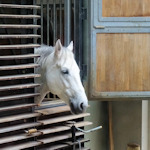The famous Spanish Riding School features the Lipizzaner horses (often called Lipizzan in North America), who trace their lineage back to the 1500s. The school only uses the stallions for performances.
Here’s how to see the horses in Vienna, together with a brief history of the breed’s association with the riding school, Austria and the Habsburg court.
- Book a Spanish Riding School experience*
- See also:
How to see the Lipizzaners
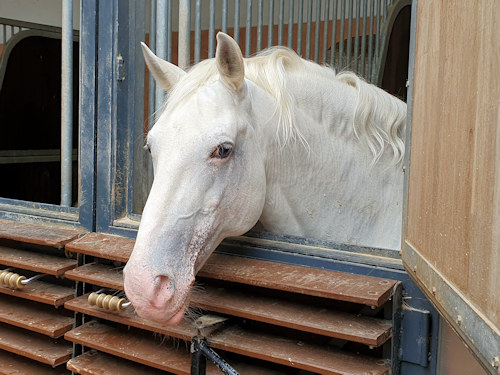
(A Lipizzaner stallion in Vienna; photo taken with the kind permission of the SRS during a press tour)
Once in Vienna, you have a couple of options for actually viewing the stallions…
Ticketed options
The most frequent opportunity is the one-hour public training with commentary that takes place most weekdays in the same winter arena used for actual performances.
The riding school also offers guided tours through the stables, including an architectural special tour. Both alternatives get you right up close to the stallions.
And, of course, you have the (gala) performances themselves. (More info on paid options)
Outdoor options
Chance (and rare) encounters with the Lipizzaners are possible in Vienna outside the stables or arena.
Either wait near the entrance to the stables or see if they’re using the paddocks in the Burggarten. Both locations are extremely central. (More info on outdoor options)
The story of the horses
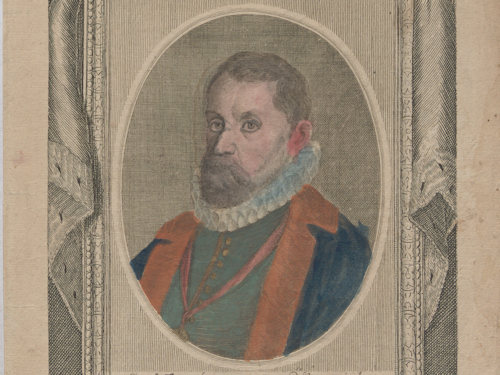
(Karl II Franz, founder of the original Lipizzaner stud farm, in an anonymous and less than flattering early 18th-century painting, Wien Museum Inv.-Nr. W 2690, excerpt reproduced with permission under the terms of the CC0 licence)
So how did the white horses come to be associated with Vienna?
Cast your mind back to the occupation of Spain by the Moors, which began in the early 8th century and ended in full with the fall of Grenada in 1492.
One of the consequences of this long exposure to Moorish influence was cross-breeding of Arabic and Iberian horses.
The resultant “Spanish” horses proved particularly well suited to the needs of the classical horse rider’s art, combining elegance and strength with a noted ability to pick up the moves required.
Karl II Franz (1540-1590), a Habsburg Archduke and ruler of a collection of lands known as Inner Austria, must have been an admirer, since he decided to establish a stud farm in the late 16th century for breeding his own Spanish horses.
The chosen location was near Lipizza (aha!), the Italian name for Lipica (now in modern-day Slovenia).
Doors opened to the first influx of mares and stallions in the 1580s, and so began the long history of the Lipizzaner horse breed and its close association with the Habsburgs.
The Lipizza stud farm remained the breeding home of the horses for well over 300 years and a supplier of Lipizzaner horses to the court (and court riding school) in Vienna. But not without a few breaks; the authorities evacuated the animals to other Habsburg lands on occasion to avoid foreign armies and occupiers.
Then, in 1915, Italy joined the other side in WWI. This left the Lipizza farm perilously close to enemy territory.
As a result, the horses moved to Laxenburg in Austria and Kladrub in what is now Czechia. They never returned, since the land on which the Lipizza stud farm lay passed to Italy through the post-WWI Treaty of Versailles.
Austria (now a republic) gave back some of the evacuated horses to the Italians, but used the rest to open a new stud farm at Piber: about 220km outside Vienna in the west of the Austrian province of Styria.
The Lipizzaners remained in Piber until WWII, when they relocated to Hostau in Czechoslovakia for safety reasons.
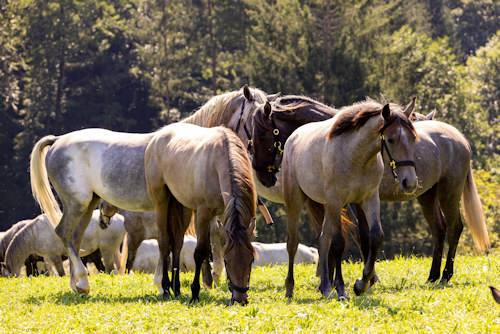
(Young stallions at Piber. Each year, they spend the summer on a mountain pasture with the staff staying in an adjoining mountain cabin; image courtesy of and © the SRS; photo by Harry Schiffer)
In April 1945, the fate of the horses hung somewhat in the balance when Hostau came under threat from the advancing Red Army.
Fortunately for the Lipizzaners (and us), some American units got wind of the situation. They staged a relatively daring advance into the area and transferred the entire stock to safer territory.
The horses returned to Austria and eventually Piber, where they still have their home today (which you can visit).
Disney even made a film of the rescue incident in 1963…The Miracle of the White Stallions starring Robert Taylor.
The Wiener Kurier newspaper described the mission in their edition of November 3rd, 1945 (my translation):
The area around Pilsen is still being fought over so the area remains unsafe. A US unit received the order to save 250 mares with the aid of tanks […] The horses started their journey protected by the tanks. Their route took them through turbulent bandit territory into Bavaria and then on to Upper Austria.
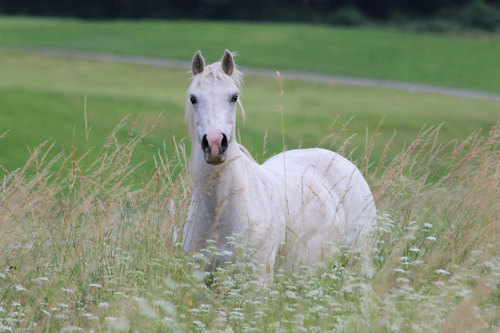
(Photo licensed from and © iStock.com/bririemoments)
The Piber stud still provides the stallions that live, train and perform as part of the Spanish Riding School in Vienna (the two institutions are part of the same organisation). The stables in Austria’s capital are right in the centre, just a trot across the road from the arena that hosts the training sessions and performances.
You also find the horses in Heldenberg in Lower Austria, which serves, for example, as a training centre, holiday location, and retirement home for the Spanish Riding School’s stallions. As with Piber, you can also visit Heldenberg.
The original stud at Lipica still breeds its own Lipizzaners and a few thousand can be found worldwide: North America has a Lipizzan association, for example. You can even buy a Lipizzaner from the Piber Stud farm, but it’ll typically cost you several thousand Euro.
P.S. The Lipizzaner stallions are not born with the famous white coat, but turn that colour after six to nine years. Only a very few retain a dark coat.
